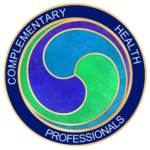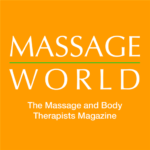Description
Presentations include:
Effects of the Jing Method of Clinical Massage for Treating Musculoskeletal Pain in Post-Menopausal Women
Joanne Grinbergs ACMT BTEC6
Abstract:
- Background: Due to improved life expectancy women will suffer from post-menopausal symptoms for up to a third of their life and musculoskeletal pain is one of the many they may experience. This study aims to assess the effectiveness of the Jing Method of clinical massage in treating musculoskeletal pain in post-menopausal women, through a series of directed treatments delivered online, to include self-directed massage techniques such as stretching, soft tissue release, trigger point work and acupressure.
- Method: Six women between the ages of 52 and 66 years old were recruited via social media, with those eligible being identified through an initial phone call. This was an ‘in group’ study and used Measure Yourself Medical Outcome Profile (MYMOP 2) to record scores of pain and wellbeing before and after the treatment phase. The directed techniques were based on the Jing Method of clinical massage.
- Results: Analysis of MYMOP 2 showed that all participants experienced a reduction in their pain levels during the treatment phase of the study.
- Conclusion: Results show that the Jing Method of clinical massage improved all participants’ pain levels. Further research with a larger cohort would provide a vigorous study that could build a more comprehensive understanding of this issue.
An exploration into the provision of the Jing Method of Clinical Massage online during the COVID-19 lockdown. A qualitative study.
Lindsey Simpson-Girling BEd, PGCert, ACMT, BTEC6
Abstract:
- Background: Lockdown, imposed by the government due to the COVID-19 pandemic, has prevented people from accessing their usual health care and treatments. Therapists had to consider innovative ways to provide effective treatments to patients in a safe environment so as to help them reduce pain and increase range of motion. Some therapists reacted to the situation by diverting their skills to an online environment, offering treatment in a way that did not require close human contact and posed no risk of infection.
- Objective:The world has changed drastically in the past few months due to the effects of the COVID-19 pandemic. The expansion of clinical massage therapy from a very hands-on practice to one focused around online self-care was new and perhaps might not have developed were it not for the pandemic.
This paper sets out to explore the importance and possibility of providing online treatments via video call for those in chronic pain guided by the Jing method of clinical massage and led by an informed therapist. To gain a picture of the feasibility of this pioneering approach, it looks at the perspective from three angles: the therapist, the therapist’s peers, and the participants involved. - Method: The therapist used three methods for capturing a triangulation of data in order to explore the feasibility of offering the Jing method of clinical massage as an online treatment: The therapist’s professional journal, reflective conversations with the therapist’s peers, and feedback gathered from participants.
Five participants were recruited to receive online treatments. The Jing method of clinical massage was adapted to design the online treatments. Each participant was taken through a thorough online consultation and four weekly online treatments.
Participants completed weekly questionnaires, which used the VAS scale, after each session and one final, anonymous questionnaire with open questions. - Results: Positive results emerged for participants regarding reduction in pain and increase in range of motion.
Four main themes emerged:
1. Efficacy of the Treatment
2. Educating and Empowering Participants on Self-care
3. The Therapeutic Alliance
4. Professional Growth of the Therapist - Conclusion: These qualitative findings suggest that the Jing method of clinical massage is adaptable and robust enough to handle the challenges of online treatments and it has provided a good foundation for online treatments. Online delivery of the Jing method of clinical massage has been possible, enjoyable and anecdotally successful for both the therapist and participants. There has been success in helping participants out of pain and increasing range of motion.
This small scale pilot study brought positive results when exploring the provision of the Jing method of clinical massage online, and further exploration through additional studies can build on this.
Case study on the efficacy of the online use of The Jing Method to reduce chronic nonspecific lower back pain.
Jessie Percival BA, MA, ACMT, BTEC6
Abstract:
- Aim: To determine the effects of the use of the Jing Method online to reduce the pain in an
active female in her late twenties with chronic nonspecific lower back pain. - Method: The participant was given the Bournemouth Back Pain (BBP) questionnaire to measure her pain. The BBP questionnaire was given a week prior to the intervention for
baseline data on her back pain. The participant received six sixty-minute self-care online
sessions via video call. The BBP questionnaire was completed the week after each session,
before the next session for 6 weeks. A final BBP questionnaire was completed four weeks
after the last session, in week 10, to follow up on the participant’s Low Back Pain. - Results: Results showed a reduction in pain at the end of the six weeks of online self-care from the baseline week and increase in pain in the 4 week follow up after the intervention had finished.
- Conclusion: The results indicate the use of the Jing Method online for chronic nonspecific low back pain is effective in the short term but not in the long term. Due to the COVID-19 pandemic and limited participants, further research is needed to solidify this claim.
Effects of the Jing Method in treating symptoms of depression in men.
Tom Rigby ACMT, BTEC6
Abstract:
- Objective With incidents of male suicide disproportionately higher than women this
case study sets out to discover if massage can be of benefit in combatting the symptoms of
depression in men. - Method: TA control based comparative case study using DASS 42 to
track symptoms of depression with and without treatment over a 12-week period. - Results: A positive effect on the symptoms of depression was witnessed.
- Conclusion: In this case study the Jing method demonstrates itself beneficial in the treatment of symptoms of depression in men, further and wider study is recommended.
The efficiency of online self-care for the treatment of musculoskeletal knee pain taught using video communication.
Georgie Rock BA Hons, ACMT, BTEC6
Abstract:
- Objective To investigate the efficiency of combining self-administered treatments taught online via video communication in the treatment of musculoskeletal pain of the knee.
- Method: A 13-week control comparative study using The Knee Injury and Osteoarthritis Outcome Score (KOOS) questionnaire to track five patient-relevant outcomes including, pain, symptoms & stiffness, daily function, sports function and quality of life, within a two-participant group study.
- Results: Results show positive reduction across all five patient-relevant outcomes in the short term.
- Conclusion: Online video intervention using self-administered techniques is effective in the short-term treatment of musculoskeletal conditions of the knee. However, further studies with larger, more homogentisic groups are recommended to determine long-term effects of this treatment.
Personal Growth and Development: Refining the Skill of Teaching Prescriptive Rehabilitation Exercises during the 2020 pandemic lockdown.
Marina Kyriacou ACMT, BTEC6
Abstract:
- A qualitative study of online intervention with six participants was undertaken over an eight-week
period, to assess the personal growth and development of a manual-bodyworker transferring to
online intervention during the covid-19 pandemic in March 2020. Participants were of no specific
age or gender and a variety of pathologies were treated. The content of the intervention was
developed and adapted from the ‘teaching’ aspect of the Jing HFMAST protocol. The aims were to
observe and reflect on the development in skill set and capability of the therapist.
Four main themes were established; Covid-19 lockdown changed the delivery of the existing
massage format, the therapist’s ability to prescribe safe and appropriate rehabilitation exercise,
therapeutic alliance and exercise adherence.
The study demonstrated learning and growth in the skill set and development of working with
participants online, in the absence of manual bodywork.
The effects of a six-week course of treatment using the Jing Method™ of clinical massage on shoulder pain in women after breast cancer surgery.
Susie Johnston BA.Hons, PGCE, ACMT, BTEC6
Abstract:
- Background Diagnosis of breast cancer has greatly increased in recent years, however the chances of a surviving the disease have improved. More women are therefore surviving and living with the consequences of breast cancer treatment. This study aims to assess the
effectiveness of the Jing method of clinical massage in treating arm, neck and shoulder disfunction in women who have undergone surgery for breast cancer, in a programme delivered online to include self-massage, stretch and acupressure. - Method: A group of 7 women aged 50-63 were recruited via social media and a local cancer charity. The participants had received a range of surgery for the treatment of breast cancer. The Disability of Arm, Shoulder and Hands (DASH) was used during a six-week control period
and throughout the treatment period, thus establishing levels of upper limb disability before
and after the intervention. The programme was based on the Jing method of clinical massage
concentrating on increasing mobility, reducing pain and increasing strength. Participants were
given self-care exercise to practice in between sessions. - Results: All the participants in the study experienced a reduction in their level of disability.
- Conclusion: Further research would be beneficial to explore the implications of this study and to encourage more widespread use of similar programmes to ease upper limb issues, post breast cancer surgery.
For over a decade Jing Massage has been proud to be the only school in the UK offering a BTEC Level 6 Professional Diploma in Advanced Clinical and Sports Massage. This unique course allows students to study at the highest accredited level of massage and soft tissue therapy and develop and engage in their own research to add to the worldwide pool of clinical research in massage.
Our January conference gives you the chance to hear the latest cutting edge of massage research in the UK






